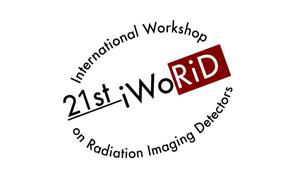Speaker
Description
Detectors for applications in the soft X-ray energy range (250–2000 eV) face several challenges like providing a high signal-to-noise ratio, single photon resolution capability, a large dynamic range, fast readout and a high quantum efficiency as well as the requirement for vacuum mechanical setups.
MÖNCH [1] is a low-noise charge-integrating hybrid pixel detector under development at PSI targeting soft X-ray applications at synchrotron sources and X-ray free electron lasers. The current prototype MÖNCH0.3 [2] has pixels of 25 $\mu$m pitch and an active area of 1 x 1 cm$^2$ with a noise of 35 electrons ENC (rms). Due to its low noise, MÖNCH0.3 has been successfully used at several pilot experiments at different beamlines of the Swiss Light Source (SLS) down to 700 eV photon energies[3]. Nevertheless, some optimizations of both the chip design and the sensor side are still necessary before building a large area charge-integrating detector operative for the soft X-ray ATHOS beamline at the Swiss Free Electron Laser (SwissFEL).
Several doping technologies were used to reduce the thickness of the inactive layer of the sensor entrance window in order to improve the quantum efficiency below 1 keV. In this contribution, we will show the characterization of these silicon sensors in terms of quantum efficiency and noise fabricated by FBK with different entrance window technology and bump-bonded to a MÖNCH0.3 readout chip.
Moreover, we will present the performance of MÖNCH0.3 in a new soft X-ray spectromicroscope based on ptychography at the SIM beamline of the SLS highlighting its advantages compared to monolithic detectors and we will discuss the main challenges at low energies like reducing the noise and obtaining single photon resolution. Finally, we will give an outlook for the development of the large area detector for SwissFEL.
[1] R. Dinapoli et al, J. Instrum. 9 (2014) p. C050115
[2] M. Ramilli et al, J. Instrum. 12 (2017) p. C01071
[3] A. Bergamaschi et al. (2018) Synch. Rad. News 31, 11.
